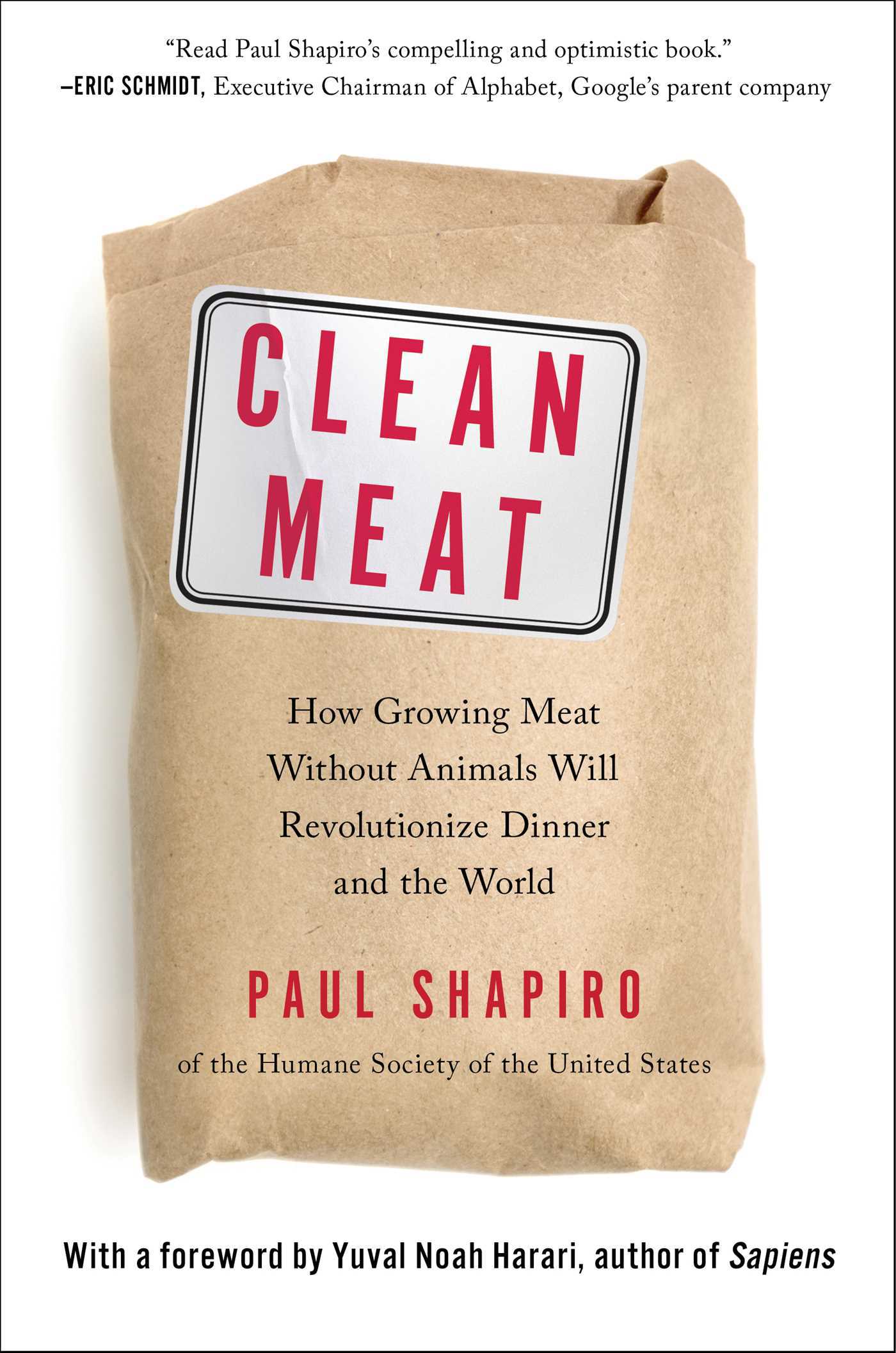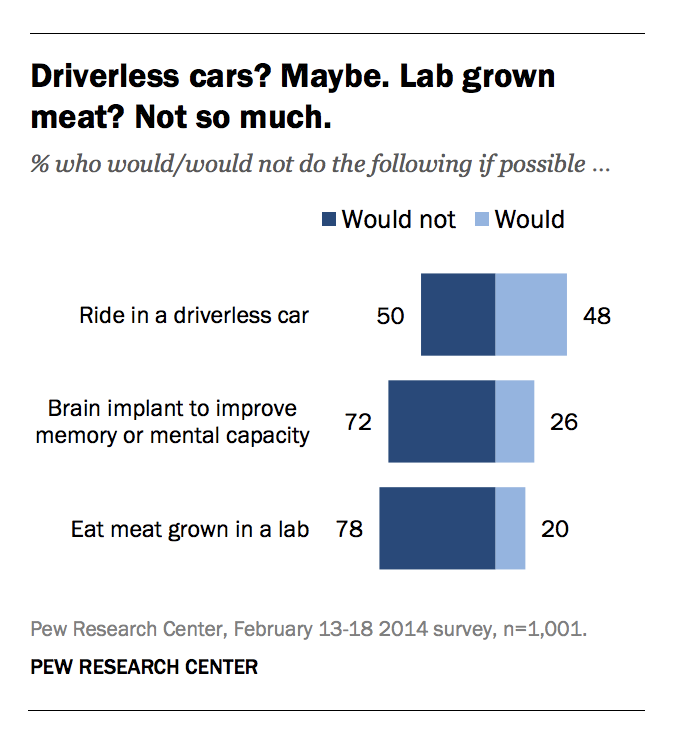Paul Shapiro’s forthcoming book, Clean Meat: How Growing Meat Without Animals Will Revolutionize Dinner and the World, celebrates the future of meat and meat products that do not require animal slaughter. For the uninitiated, this is a surprisingly broad category of consumption, including “meat” synthesized from pea-protein-derived heme (the iron-rich non-protein component of hemoglobin) to meat grown from the cultured muscle cells of live animals. For animal welfare advocates (Shapiro is vice president for policy at the Humane Society of the United States) and environmentalists who oppose factory farming on ecological grounds, this bold alternative to animal agriculture holds far more hope than promoting vegetarianism or veganism, which have so far proven to be ineffective at curbing meat-eating trends.
Shapiro’s primary task is to trace how this emerging industry’s pioneers—mostly Silicon Valley-funded scientists—have grappled with considerable technological and economic challenges to make clean meat an affordable and desirable consumer option in the not-too-distant future. Imagine a book promoting the future of steam-engine rail transportation in 1800, or virtual-reality devices in 1970, and you have a good sense of what this carefully researched and lively written volume accomplishes. Shapiro is a fair-minded and knowledgeable guide.

(Photo: Gallery Books)
If the topic seems scientifically, if not gastronomically, esoteric, think again. With the U.S. slaughtering over 10 billion land animals a year, it’s impossible to understate the ecological and humanitarian significance of the clean-meat proposition. Shapiro is at his best when, in the spirit of this potential payoff, walking readers through the technological intricacies that will bring these products closer to retail reality (some are already there—such as the Impossible Burger). Especially impressive—and surely a conscious strategy on Shapiro’s part—is his ability to simultaneously present and demystify the laboratory (rather than the farm) as the worksite required to make these products possible (although the term “cellular ag” is a bit of a stretch; you can’t euphemize your way out of the weirdness of clean meat). Vegetarians who have heard of relatively new companies and organizations such as New Harvest, Impossible Foods, Memphis Meats, Modern Meadow, and others will leave this book with a renewed sense of their impending significance to the global economy and world diet, rather than seeing them as mere merchants of some kind of high-tech Frankenfood (as many “all natural” advocates often do). (For more on Impossible Foods, read Rowan Jacobsen’s Pacific Standard feature story, “The Biography of a Plant-Based Burger.”)
For consumers who have no interest or knowledge whatsoever of these alternatives—which is, at this point, most consumers—it is an altogether different question as to how they will react to clean meat. The internal challenges faced by producers seem fairly obvious: Clean meat is highly processed, it’s disassociated from the romance and grit of agriculture, it’s a deviation from 250,000 years of eating meat from live animals. And the external challenges are just as daunting. To name one: It’s not only clean meat that has to become price competitive with meat from a slaughtered animal. It will also be necessary for the scores of by-products made from farm animals (the industrial binders, powders, fertilizers, and glues that come out of slaughterhouses) to become price competitive as well. Such an across-the-board prospect makes the proposition of a market transition to clean meat that much more daunting.
One might also add that, while clean meat is constantly referred to by supporters as a “disrupter”—an overused term—advocates are relying on Silicon Valley billionaires and big food companies such as Cargill (which has invested in this technology, probably as a kind of hedge for controlling it), while downplaying the role of university research and (less so) sustained government investment. The more radicalized ethical vegan rhetoric, rooted as it was in truly disrupting the ideologies that made factory farming possible in the first place, is gone. Comparatively speaking, the current talk of “disruption” feels sanitized, if not as status quo as a fat cat’s yawn. To take this observation a step further, the decision among clean-meat advocates to let the “free” market, concentrated tech wealth, and unfettered consumer choice drive it into the future reminds one how these factors, in other contexts, justify the worst forms of animal exploitation.
That said, it is ultimately taste preference that will get this product off the ground in a way that might enable it to compete with real meat. Even if it makes the rich richer there would still be real benefits to follow. So the critical question at the heart of this entire endeavor is whether a critical mass of consumers will choose this product at an early stage of its availability to boost it into the marketplace. To his credit, Shapiro directly engages this difficult question throughout the book. But something in his assessment seems to underappreciate the nature of the problem. For example, he quotes clean-meat pioneers making arguments such as If you eat hot dogs you are eating food about which you have little knowledge about, so why would it be so hard to eat a clean meat burger? Of course this line makes perfect sense—if you are rational about eating. But as anyone who spends any time thinking or writing about food knows, and as Shapiro knows, rational is the last quality to describe our approach to eating.

Some surveys suggest how open-minded (or not) consumers are to clean meat. A 2014 Pew survey uncovered less than auspicious results. It asked 1,000 people if they’d eat meat “grown in a lab.” Nearly 80 percent said no. Another poll of 24,000 European consumers asked about growing meat from “cell cultures” and less than a quarter approved. A 2012 survey asked almost 2,000 British citizens if they’d eat “artificial meat grown in a laboratory.” Only 19 percent said they would. These numbers are obviously discouraging. Bruce Friedrich of the Good Food Institute correctly observes that, when it comes to surveys, wording matters, and words such as “artificial” are coded in a way that turns us off. True as that point is, the fact that it might skew the results of the survey is less significant than the fact that it works so well to frighten potential consumers in the first place—a point that will hardly be lost on traditional meat producers if clean meat should ever become a genuine threat to their territory.
Shapiro has made about as heroic an effort as one can make to convince even skeptical readers that clean meat will be a big part of our future. The world will be a better place if his argument wins. But with real meat—as opposed to all the other historical examples of technological transfer that gives clean-meat eaters hope (Shapiro mentions whale oil to kerosene as one case)—we put it in our bodies by way of our mouths, and we do so with rituals and traditions and chants and prayers that go back for millennia, and we invest it with all manner of meaning that defies logic and rationality. If there’s a figure whose meaty verbal swagger is more saturated with masculine bravura than Anthony Bourdain, keep him away from me. But as the author of Kitchen Confidential writes, “To me, life without veal stock, pork fat, sausage, organ meat, demi-glace, or even stinky cheese is a life not worth living.” The company Bourdain keeps is vast, and, I’m afraid, they want their meat dirty.





